
2D Metroid Retospective: Where It All Began - Article
by Paul Broussard , posted on 02 September 2021 / 3,474 ViewsThis is the first in a three part series looking back on the history of 2D Metroid games in anticipation of the upcoming release of Metroid Dread. Today, we'll look at Metroid for the NES and Metroid II: Return of Samus for the Gameboy.
For many of us, the influence of Metroid’s design philosophy has become so prevalent in games that we hardly notice when we see it anymore. From the seemingly ever present torrent of indie 2D Metroidvania titles on Steam, to more famous landmark titles like Symphony of the Night and Dark Souls, the fingerprints of the Metroid titles can be found all over gaming history. And yet, despite its influence on so many series, many of which are wildly popular, Metroid has never really dominated the sales charts. Only two games in its catalogue of eight mainline titles, two remakes, and two spin-offs (as well as a random pinball game) have broken the two million sales mark.
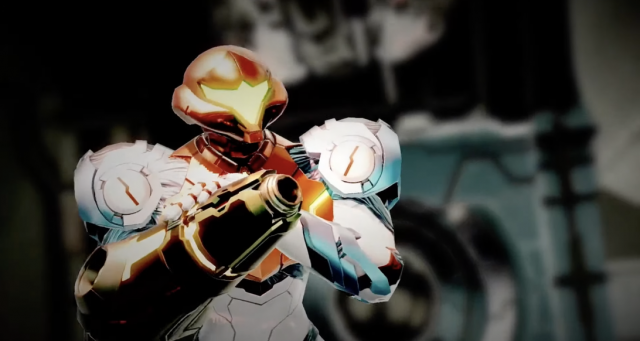
So with the release of Metroid Dread on the horizon, this seems like as good a time as any to revisit some of those older titles, examine what made them so influential, see how they’ve built off each other, and look at just how they defined gaming. Up first are the debut titles in the series: Metroid for the NES, and Metroid II: Return of Samus for the GameBoy.
The original Metroid released for the NES in 1986 in Japan and 1987 in the West with a myriad of new ideas at its disposal. This may not come as a total surprise, as the much less populated world of gaming back then meant that new ideas were easier to come by, but the ways in which Metroid innovated are worth appreciating nonetheless. The first innovation is something most players at the time noticed right off the bat. Unlike virtually every other side-scrolling game at the time, Metroid didn’t limit itself to a linear adventure moving left to right. Players were expected to travel left, right, up, down, and frequently pass through areas they had visited before. This might sound fairly mundane today, but at the time it was a wholly new way of approaching games, with the only other notable comparison being the original Legend of Zelda, which had launched slightly earlier.
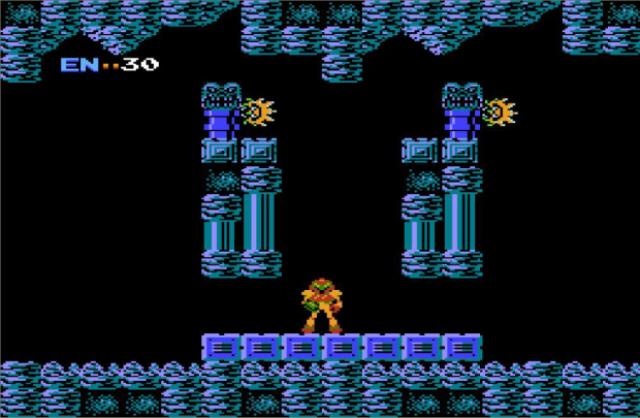
Like its sister series, Metroid was an open ended exploration game, based around adventuring through a large world, discovering new abilities and upgrading your character, and defeating bosses. Unlike Zelda, however, Metroid took something of a unique approach to navigating its world. Whereas the original Zelda’s world was filled with dungeons that could largely be conquered in any order, exploration in Metroid’s world was dependent on what tools you had unlocked. The initial room of the game sets the stage for this, not letting you progress until you turned left and found the morph ball. Some doors won’t unlock without missiles. Blocks that seal off boss areas won’t break without bombs. Certain ledges are too high to reach without a jump boost.
Metroid’s unique approach - one that ended up being copied by later Zelda installments in many ways - was using its items as navigational tools as much as weapons. If you’ve ever played a Metroid game, you almost certainly remember the feeling of seeing an item you can’t access or an area you can’t get into with your current abilities, only to then later find the ability in question and recall that you can go back and reach it now. This way of designing exploration wound up being incredibly influential on gaming as a medium, and largely formed the basis of the “Metroidvania” genre that remains prevalent to this day.
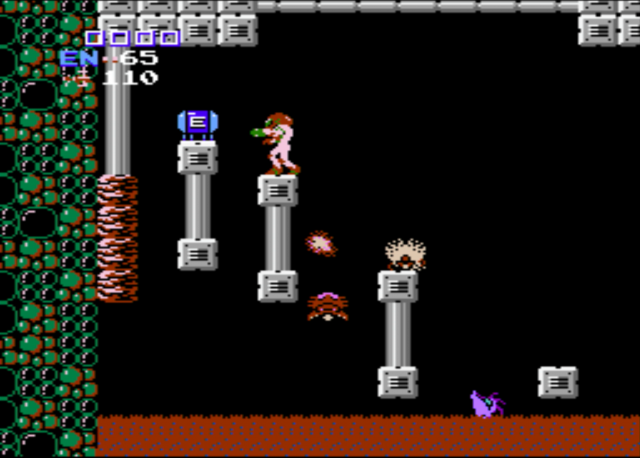
The narrative in Metroid was a simple affair, as was the case for most games of the time. In a far distant future where humanity has colonized the galaxy and encountered numerous alien civilizations, an incredibly dangerous species (called Metroids) with the potential to wipe out the galaxy is discovered. The nefarious “Space Pirates” kidnap some Metroids and seek to propagate them in order to take over the galaxy. Despite being established in later games to have the technology necessary to destroy entire planets, the ruling political body of the day, the Galactic Federation, decides to send a singular bounty hunter, Samus Aran, to the Pirate base on Planet Zebes to destroy the Pirates and the Metroids.
It wouldn’t be a retrospect on the original Metroid without touching on the surprise of Samus’ gender at the end of the game. Female protagonists at the time were extraordinarily rare, and when they did exist it was almost never as the sole lead. But, to Nintendo’s credit, there Samus was, bringing some much needed diversity to the gaming landscape, and she did it with relatively little fanfare. There was no attempt to bring attention to her gender beyond the end screen; the game just acted as if having a female protagonist was entirely normal and left it at that (something a certain game later in the same franchise would have done well to learn from).
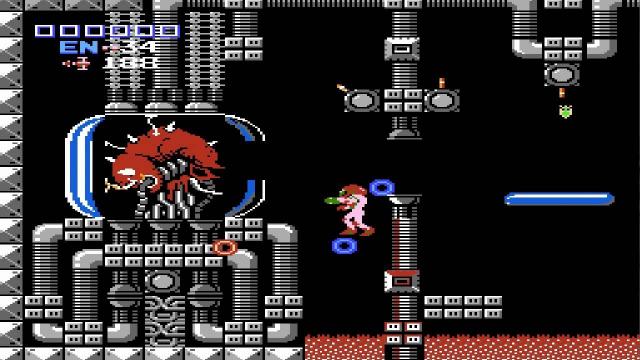
Samus’ second adventure would arrive in the West four years later, as Metroid II: Return of Samus, on the GameBoy. This time around, Samus was assigned to destroy the Metroids, as in all of them. In the entire galaxy. Somehow, despite their potential as the most destructive force in the galaxy, only about 40 of these creatures remained alive on a small pocket of the desolate planet of SR-388, and after failed attempts to deal with the Metroids themselves, the Federation contacts Samus and asks her to exterminate them once and for all.
Metroid’s sequel stands out as one of the strangest additions to the franchise to this day. Unlike its predecessor, Return of Samus progresses in a much more straightforward format. The player moves through a series of linearly arranged areas, collects power-ups that are often needed to progress in that area, and then moves to the next one. There’s never any need to revisit older areas, or even a particularly good reason to, as there are hardly any optional pick-ups that require abilities from later regions of the game.
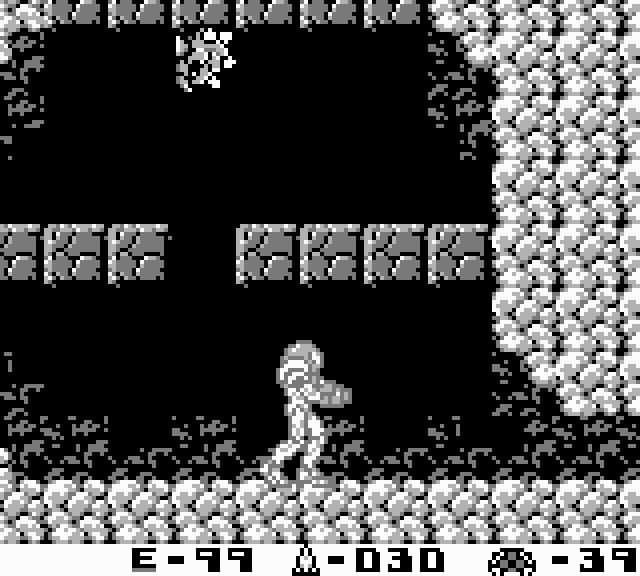
To compensate for the simpler design, Metroid II introduces a new gameplay gimmick around killing Metroids... lots of Metroids. Essentially, the player is only allowed access to one area at the start until they kill all the Metroids within that region. Once the player accomplishes that, the way to the next area opens up. Kill all the Metroids there and the next area opens up. So on and so forth. This keeps the sense of exploration intact, at least to some extent, as Metroids are often hidden very well throughout the various regions you visit, and you’ll have to comb through areas meticulously to find them all.
Fighting the same Metroids over and over would get rather tedious, and so Return of Samus endeavors to mix things up by having various stages of Metroid evolution serve as new fights. Samus starts off fighting simple Alpha Metroids, and as she progresses through the labyrinth of SR-388 she’ll end up fighting larger and stronger Metroids. A number of new upgrades are available to her as well, including eventual series staples like the Spider Ball and Plasma Beam, which help with keeping Samus alive throughout her adventure.
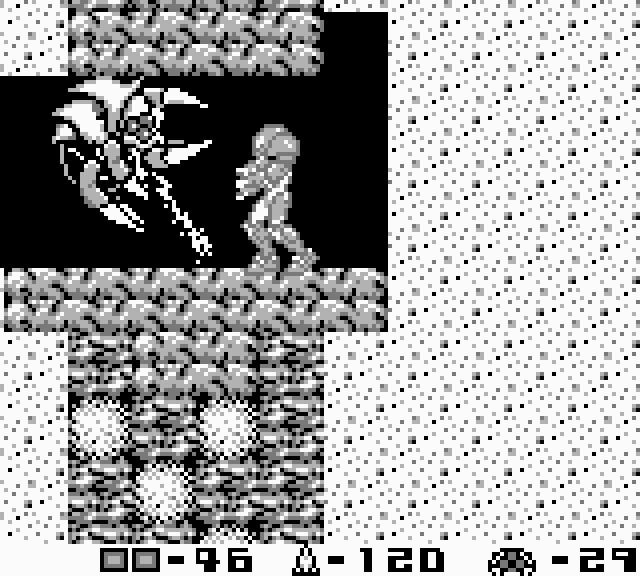
Unfortunately, despite how innovative these games were for their time, the years have not been kind to them. The original Metroid may have once been a paragon of exploration games, but for those of us looking for an enjoyable game to play in the present, the lack of a map system, inability to save without dying, absence of any way to aim down, and pretty pathetic boss fights drag the game down significantly.
For what it’s worth, Return of Samus does address some of these problems, but also introduces a host of new issues. The black and white nature of the GameBoy makes environments look incredibly samey, and the returning failure to implement a map system can make finding the last Metroid hiding in an area immensely frustrating. And even with their various stages of evolution, the fights with Metroids can get pretty tedious over time.
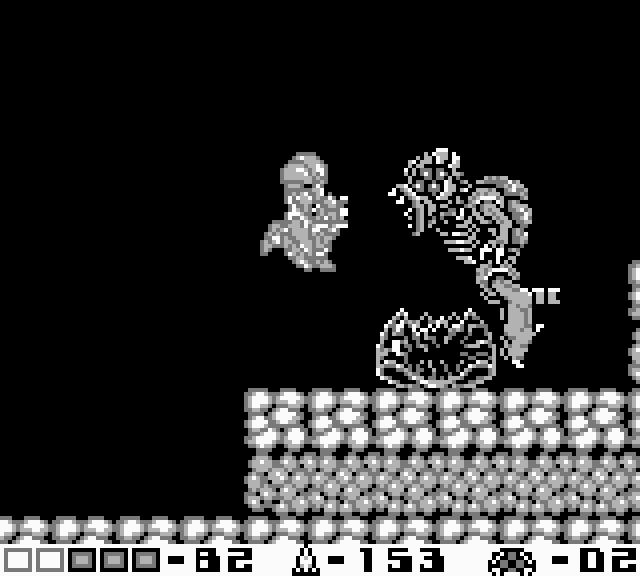
Still, even with these issues, it’s hard to deny the impact these games have had on the medium. It would just take one final push to create the genre-defining classic that would stand the test of time... and that wouldn’t take long.
More Articles
Just cant believe this franchise is not more popular.
Same.
Great intro, Paul! Newbs to the franchise will find this primer quite helpful, I think. It's straightforward and to the point without glossing over any key aspects.
As many of you know by now, the Metroid franchise has a special place in my heart, being as the original entry was the breakthrough that made a gamer out of me. My dad had let me play some of his other NES games like the original Super Mario Bros. and Ghosts n' Goblins, but I got bored with those quickly in comparison (because "all you do is go right"). It really can't be overstated how much of a difference the simple option to move in any direction and the incentives to revisit areas again later on made in my five-year-old brain! First time he ever had to peel me away from playing. Hardly the last though. Well, it was a revolutionary difference to me at that age anyway. I mean yeah today I'm more spoiled and demanding, but ya know, I think we all are. It's just natural to start expecting more as the medium evolves.
You know what wasn't revolutionary to me at all back then? The fact that Samus was female. It was clearly supposed to be, as even the instruction manual described Samus using male pronouns to make sure you'd assume she was male, but I couldn't very read very well yet at the time (and also didn't want to ;-) ), so I didn't discover that for a while. (It was a demoralizing discovery, tbh.) Maybe if I'd been 15 or 20 or 30 at the time, I'd have found a political statement there in the conclusion of the game though. Just goes to show you that those sorts of assumptions and prejudices about proper social roles have always been unnatural. Alright, I'll get off my political soap box now.
(Actually, speaking of crossover influence between the Metroid and Legend of Zelda games, I've noticed that the "surprise, female!" factor is something else that some Legend of Zelda games seem to have borrowed from Metroid. Like "surprise, Shiek/Tetra is actually Zelda" and so forth.)
Return of Samus I have to say was a letdown for me even contemporaneously due to its heavier linearity, although I was satisfied enough just to be playing Metroid on a handheld device in principle at the time. I don't replay it much these days. But hey, like ya say, Spider Ball, Plasma Beam...just yes! At least some lasting good came of it.
Not to get ahead of you, but Super Metroid though is among the best games ever made, even by today's standards, I believe.
Did you play any of the remakes?
I didn’t get into Metroid or Metroid 2, but I enjoyed Zero Mission and AM2R. I rate them very highly.
Yeah, I agree, the remakes are excellent! I really liked the official Metroid II remake Samus Returns as well, I might add, although that was more of a full re-imagining, obviously. Simple modern enhancements to the baseline experience of the classics make a world of difference in their enjoyability to me anymore.
3D Metroid - Where it all went downhill.
I disagree. The Metroid Prime Trilogy was awesome!
Had the Prime series been on any other platform, it would've been derided for being the most boring game ever. I love all the 2D Metroids, including the second game on the OG GameBoy but the critics fascination for the Prime series is the Nintendo bump at its worst.
I don't think it would be considered that way if the trilogy was on a different platform. I had a lot of fun with them when I played them and I look forward to 4.
I grew up on first person games on other platforms (I was a huge Halo fan and am still a classic Halo fan) and actually remember how Metroid Prime would barely be mentioned alongside stuff like Halo, only rarely being brought up and obviously being way more niche.
With that being said, Metroid Prime is AMAZING and imo better than a lot of other games on other platforms from the time. Might be the best 6th gen game in general.
Wait I forgot REmake 1 was from that gen nevermind that one is clearly the best.
Metroid Prime is considered the second best in the series.
Some of us even consider it tied for the best entry in the series with Super Metroid, since they both did perfectly the action-exploration game one in 2D and the other in 3D.
lol no, the franchise has always had great games, the only exceptions being subpar like other M and Federation force that seemed like a completely unrelated game.
Might be your own opinion and you didn't like the 3D First person view. But you can't throw it as a general truth. let's put critics aside, Prime has aged well, same as super metroid. Both don't seem outdated at all and if a game doesn't seem outdated after 20 years of existance, then we have to admit that the product is a high quality one.
Going downhill is a bit hyperbolic don't you find? because saleswise it had to be the Prime that has sold the most in the series (on an unsuccessful platform) .
I'd say that the series went downhill since Other M, and then Nintendo started making bad decision after bad decision with the franchise and things went on a total mess.
Hopefully, things might change with dread and the series will have the success it will deserve.
It's a fact that reaffirms my belief that, as the rule anyway, each entry in a given franchise should be made as though it were the last. That's what I think maximizes the quality. People most often do their best work when they intend to be concluding a series, I find. One can always find a way to resurrect the series if there's a justification for doing so. But don't develop a game intending to make a series out of it. Don't use the money-oriented approach, in other words. Earn each sequel.








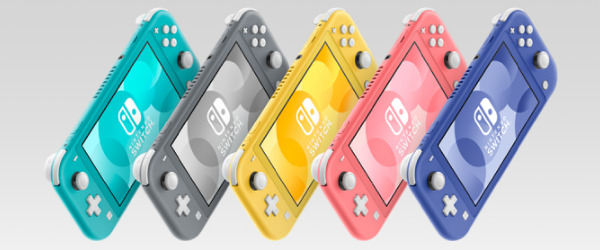
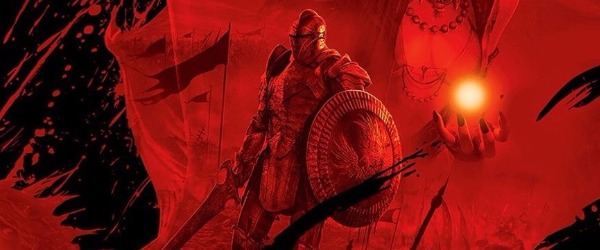
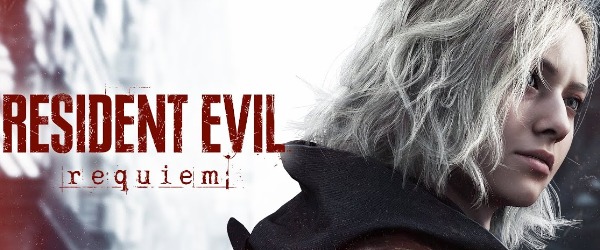
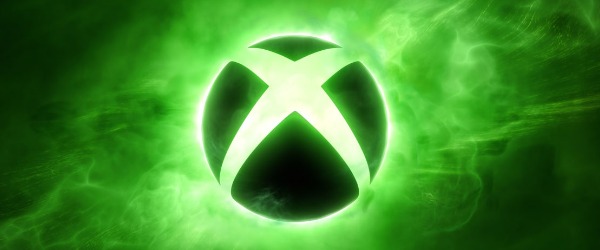










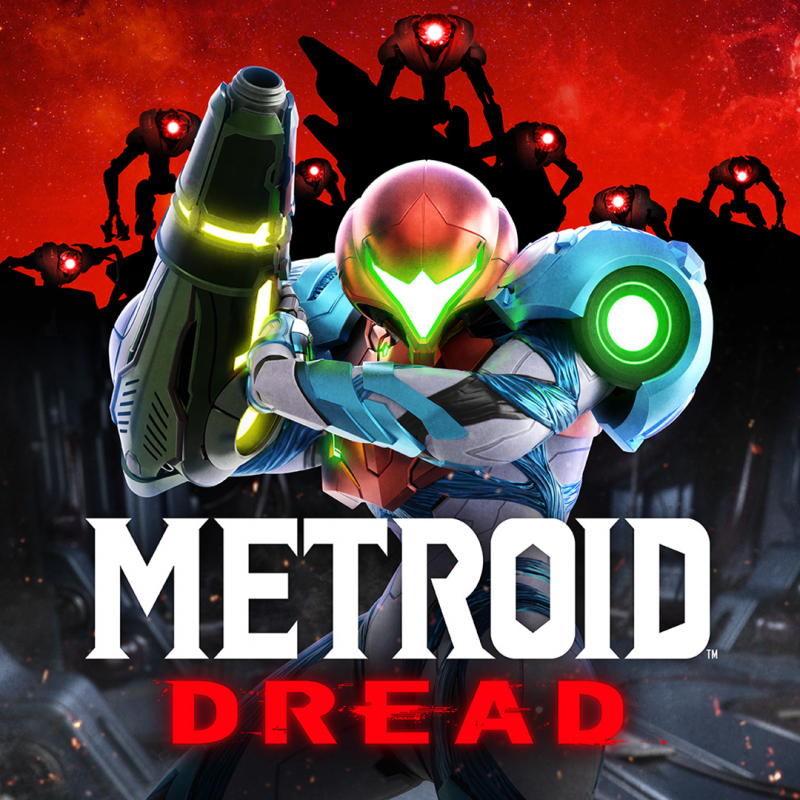





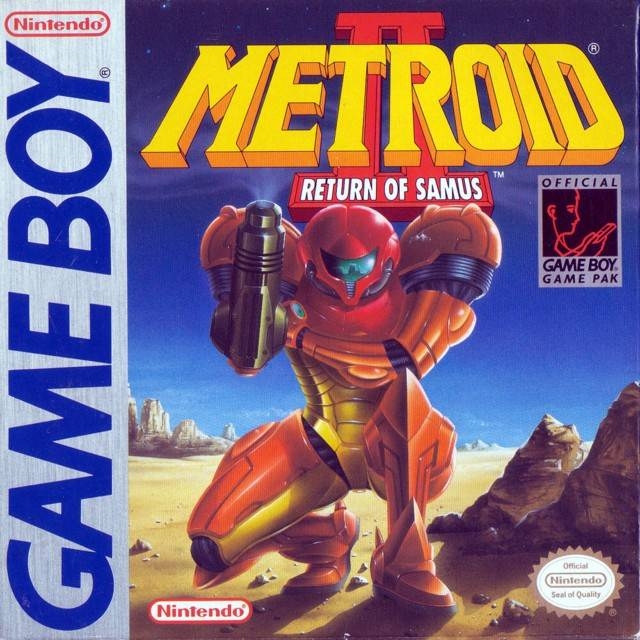

 Essay Pro
Essay Pro